21 October 2010
Tavşanlı Zone field trip, part 2
Posted by Callan Bentley
Yesterday, I shared a few thoughts about the first couple of stops on the field trip I took earlier this month from Istanbul to Ankara, prior to the Tectonic Crossroads conference. Today, we’ll pick up with some images and descriptions from the next few stops.
After lunch, our next stop brought us to a relatively low-metamorphic-grade outcrop of sheared graywacke (dirty sandstone) and shale. As you can imagine, it wasn’t particularly photogenic. Bedding was continuous only over a scale of a meter or two. It’s what suture-zone workers call “broken formation,” part way between undeformed rocks and a full-blown mélange. (It’s internally sheared up, but not yet mixed with adjacent formations.)
Looking back the way we had driven in, though (i.e., looking to the north), we could see the west-ward dipping limb of a large syncline exposed on the mountainside over yonder:
Annotated version:
The Orhanler Formation is the lowermost unit, layers of graywacke and shale that are probably Triassic in age. It is overlain by the thin sandstones of the Bayırköy Formation (Liassic), and then the limestone which is proving so irresistible to quarry excavators, the upper Jurassic Bilecik Limestone.
Our fourth stop was one of the ones that got me really excited. In fact, almost everyone on the trip seemed to get pumped up from visiting this outcrop. Check it out:
The yellow field notebook’s long edge measures ~18 cm. Behind the notebook, my friends, is a layered gabbro. The stripes you see result from differing ratios of light and dark colored minerals — plagioclase and pyroxene, mainly. But why is it layered? Is this an example of a cumulate texture; a primary igneous structure resulting from the settling of crystals onto the floor of a magma chamber? Or is this a tectonic foliation, resulting from strain the rock has accumulated? It was introduced to the participants on the field trip as an example of the former, but several of us found this argument less than totally convincing, as the size of this rock body is ~200 km long and ~2 km thick. It’s awfully hard to envision a magma body that size. I found it easier to imagine this as a chunk of the mantle, as Alain Tremblay suggested to the group.
As I poked around the outcrop, I found something which was consistent with a deformational (rather than cumulate) origin to the layering…
That’s an S-fold! Turn this cobble around, and on the other side, you can see a Z-fold:
I suppose that tight little folds like this could have come in some stage of ductile deformation after an original cumulate layer formed, but that would require an episode of deformation not required by the foliation hypothesis. If these are planes formed by mantle flow, I’d expect a few small folds in those layers at the time that flow was forming them. Besides the blueschists and eclogites, the Tavşanlı Zone includes an ophiolitic suite, and having chunks of mantle there would in no way be a shocker.
Regardless of the origin of the mineralogical layering, I think we can all be pleased to learn that it is deformed. A series of “reverse” ductile shear zones cut across the layering, as you may be able to discern in this photo:
Notice how the gabbro’s layers deflect towards the fault(s) in a “drag fold” fashion, tipping over to the left. Close up:
Left of the notebook, you can see this gentle deflection quite nicely:
This is sweet, right? I’m loving it.
A close-up shot that particularly satisfies me:
Note the thinning and rotation of the mineralogical layers as you get closer to the shear band at the center of the shear zone itself (far right of photo). Pen for scale.
We also stopped at a proper peridotite outcrop (no one’s arguing that this one isn’t mantle), which had serpentine veins cutting though it:
More later…


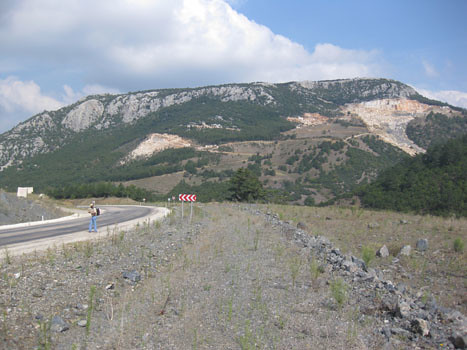
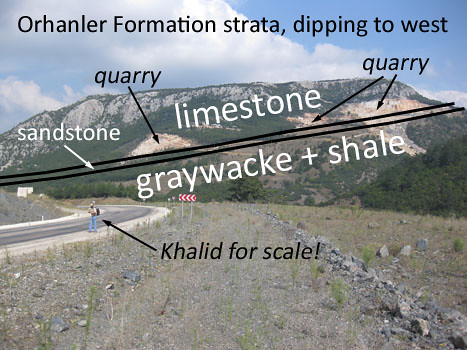

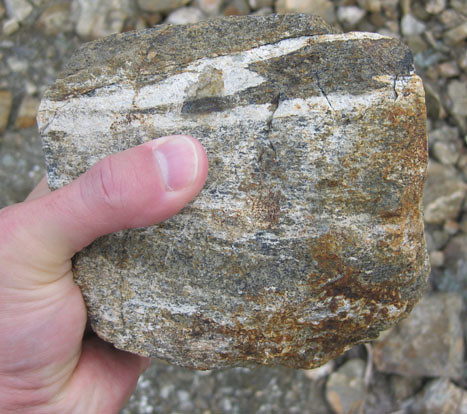

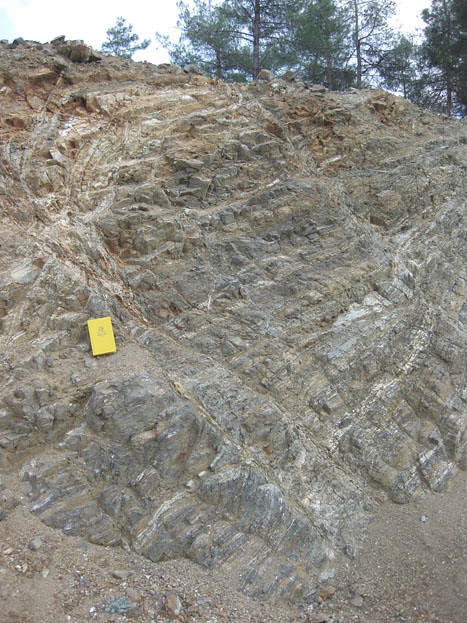

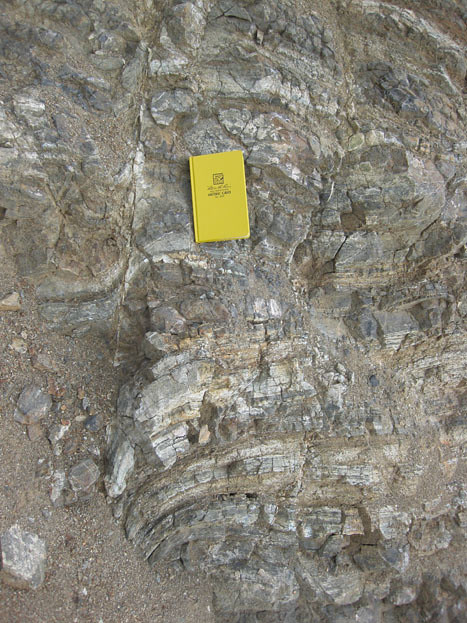
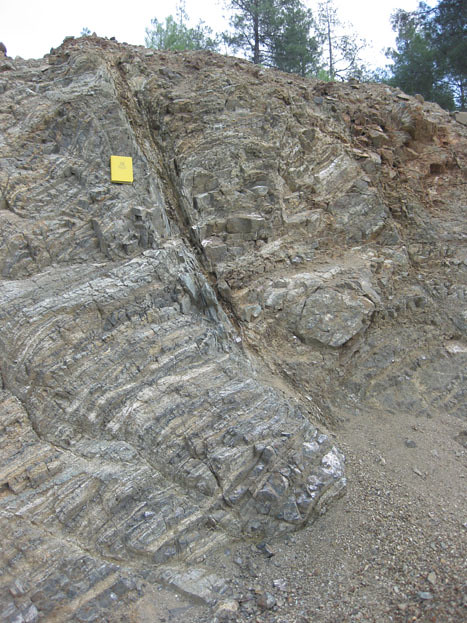

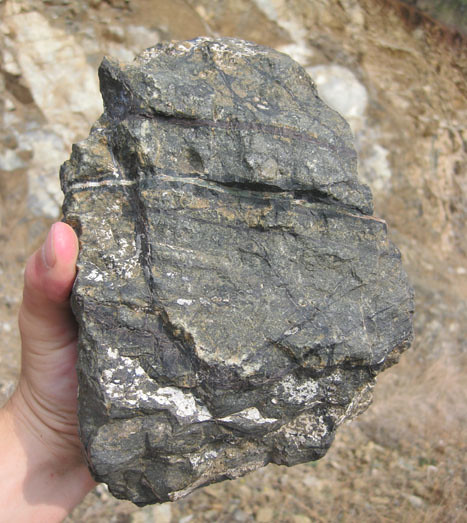
 Callan Bentley is Associate Professor of Geology at Piedmont Virginia Community College in Charlottesville, Virginia. He is a Fellow of the Geological Society of America. For his work on this blog, the National Association of Geoscience Teachers recognized him with the James Shea Award. He has also won the Outstanding Faculty Award from the State Council on Higher Education in Virginia, and the Biggs Award for Excellence in Geoscience Teaching from the Geoscience Education Division of the Geological Society of America. In previous years, Callan served as a contributing editor at EARTH magazine, President of the Geological Society of Washington and President the Geo2YC division of NAGT.
Callan Bentley is Associate Professor of Geology at Piedmont Virginia Community College in Charlottesville, Virginia. He is a Fellow of the Geological Society of America. For his work on this blog, the National Association of Geoscience Teachers recognized him with the James Shea Award. He has also won the Outstanding Faculty Award from the State Council on Higher Education in Virginia, and the Biggs Award for Excellence in Geoscience Teaching from the Geoscience Education Division of the Geological Society of America. In previous years, Callan served as a contributing editor at EARTH magazine, President of the Geological Society of Washington and President the Geo2YC division of NAGT.